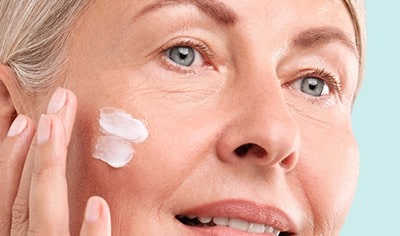
There are many factors that contribute to skin cancer over a lifetime, and it is important to know how to avoid this common and sometimes preventable issue. This list isn’t exhaustive, but it includes some of the most common risk factors. Read on to learn about factors that can lead to skin cancer and what you can do to protect yourself.
Fair skin
Fair skin is a risk factor for skin cancer, but regardless of skin color, anyone can get skin cancer. However, having a fairer complexion is a result of having less melanin in your skin, which means less protection against damaging UV rays. If you have fair skin, blond or red hair, freckle or sunburn easily, you’re more likely to develop skin cancer than someone with a darker complexion
Sun exposure over the years
The more you’ve been exposed to UV radiation, the greater the risk of skin cancer. Though young people can still be diagnosed with skin cancer, it is more likely to be found in older adults who have accumulated UV rays and younger individuals who have been in tanning booths or seen significant sun exposure in a short period of time or excessive burns.
Excessive sun exposure
Those who spend a lot of time in the sun runs the risk of developing skin cancer, especially if they neglect to wear sunscreen or protective clothing to shield dangerous UV rays. Tanning, including using a tanning bed or lamp, also puts you at risk.
Moles
Most moles are harmless, but having a large number of moles may increase your risk of developing melanoma. Abnormal moles, or dysplastic nevi, are more likely than others to become cancerous. Dysplastic nevi are generally larger than other moles, have irregular borders, may be slightly raised and, most importantly, have a very dark or blackish color. If you have a mole that is an unusual shape, growing in size, bleeding, irritated or different from you other moles, see a board-certified dermatologist who can determine whether the moles need to be removed or are benign.
History of skin cancer
If any of your immediate family members has been diagnosed with skin cancer, you are at an increased risk. Additionally, if you have been previously diagnosed with skin cancer, your chances of developing the disease again are greater than someone who has not been previously diagnosed.
Previous treatment
Some medical treatments, such as exposure to radiation or psoriasis treatment, increase your risk of skin cancer. They can also lead to a weakened immune system, making your body less capable of protecting against the disease.
So, now that you know the factors that can cause skin cancer, what can you do about it? The first step is to see a board-certified dermatologist if you have any of the aforementioned concerns. The second is to protect yourself from damaging UV rays. Always wear broad-spectrum sunscreen with an SPF of 30 or higher every day, even when the sun isn’t shining. Avoid spending time outdoors between 10 a.m. and 4 p.m. when the sun is at its peak, and stay in the shade when you can. If you’re playing sports outside, choose a water-resistant sunscreen with a high SPF, and reapply often. Sun protective clothing like long sleeves, long pants, sunglasses and wide-brimmed hats can provide additional protection from the sun.
Do you have questions about skin cancer? Ask us in the comment section.
Learn About Which Skin Care Ingredients ...
How to Prevent Types of Hyperpigmentatio...
Follow us on social
Follow us on social networks and be one of the first to learn about sales, giveaways, and free samples






